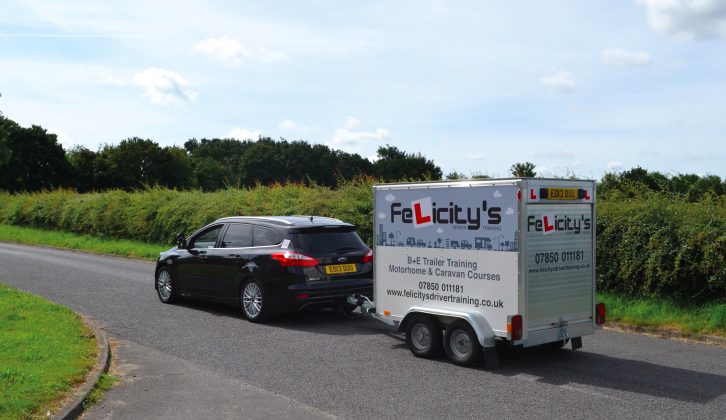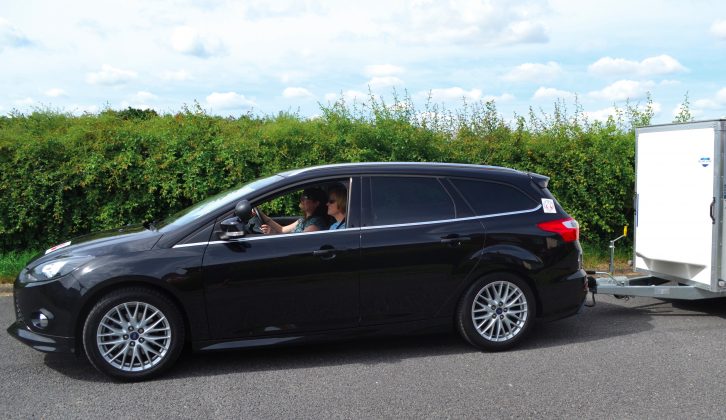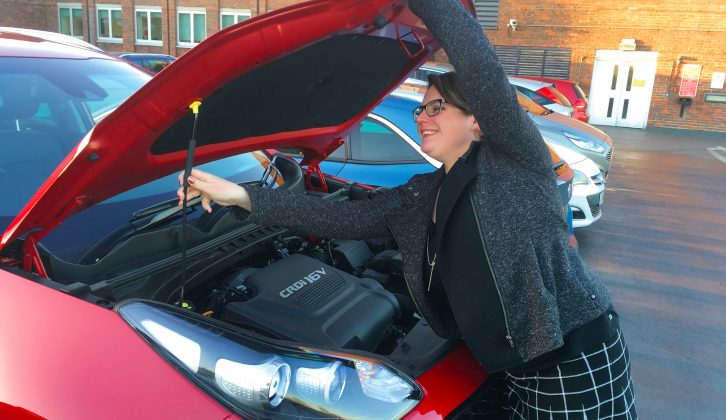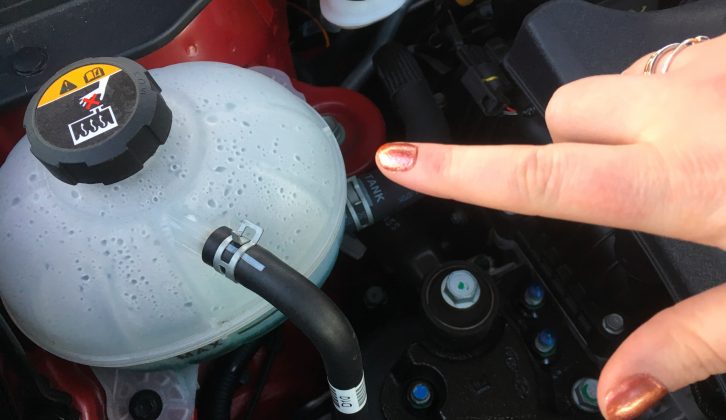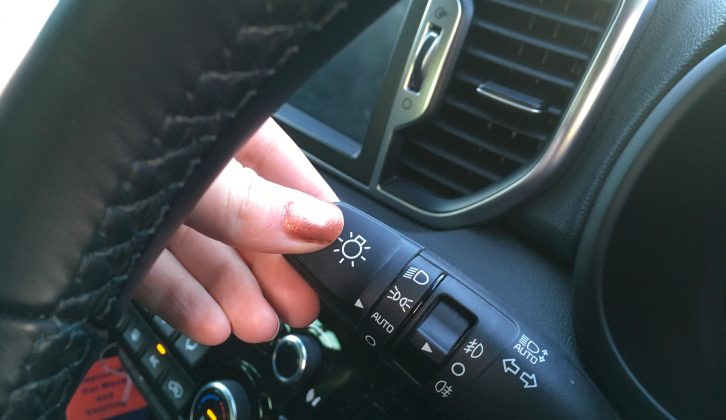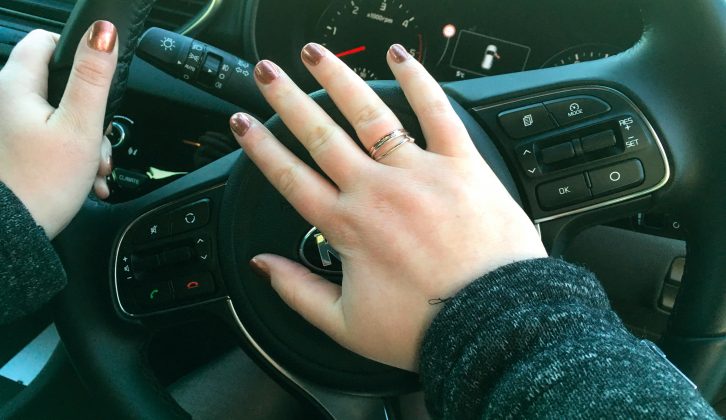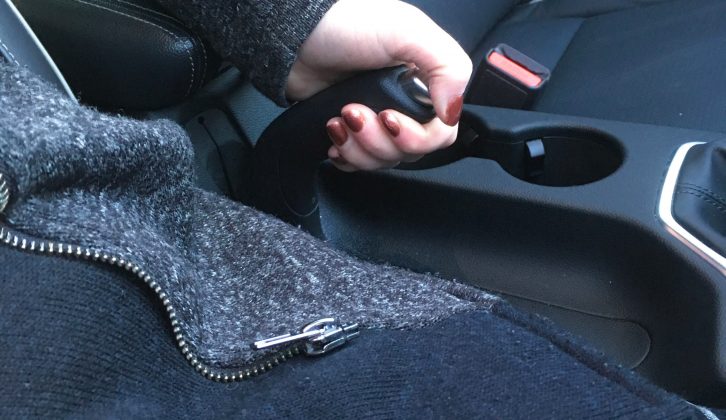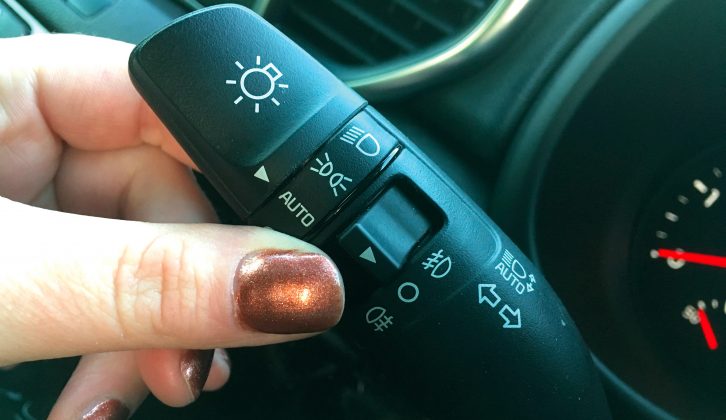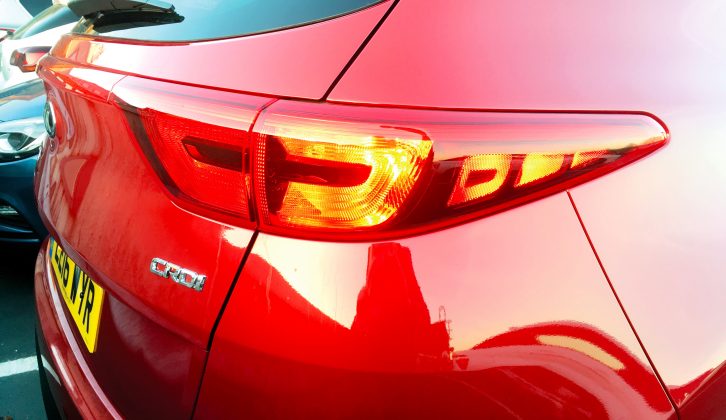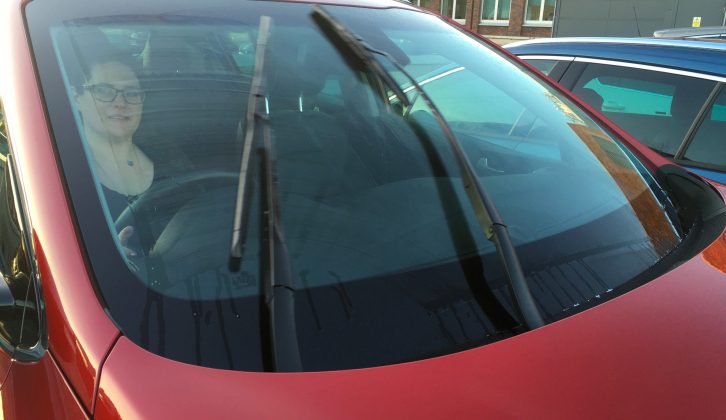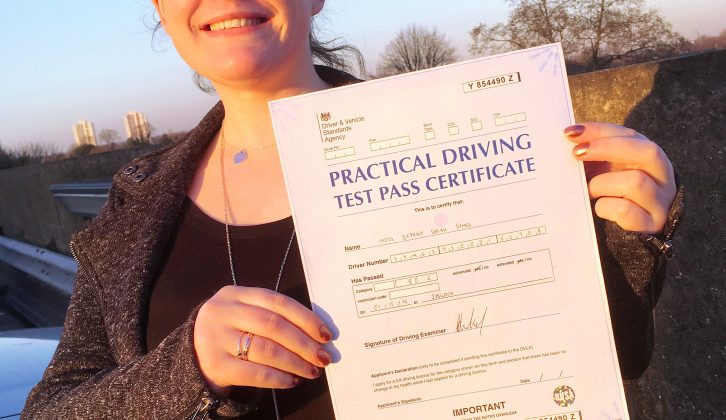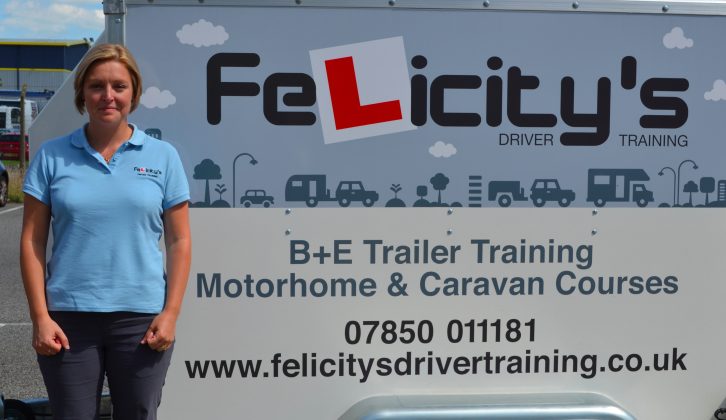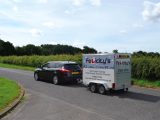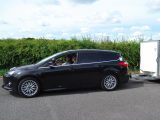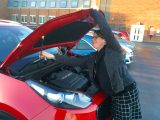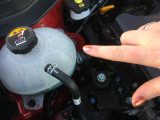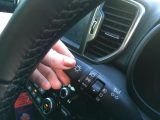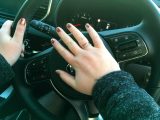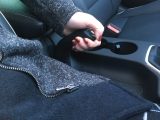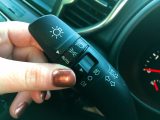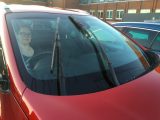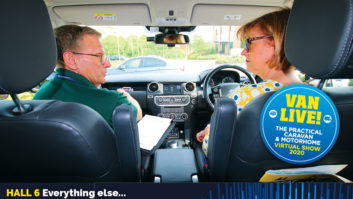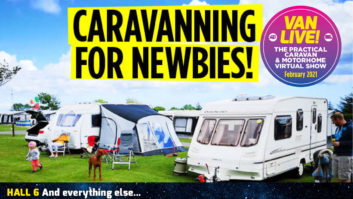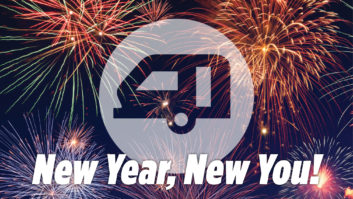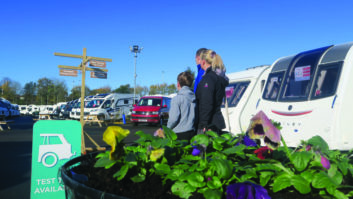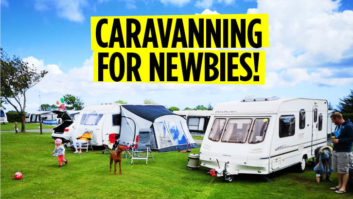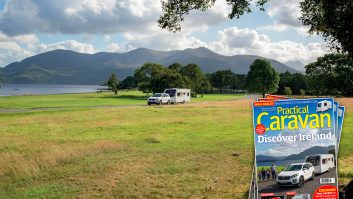I’m sorry to have to break this to you, but if you passed your driving test after 1997, your total outfit weight is limited to 3500kg. Thought you were done with nerve-racking driving tests? Think again, my friend.
If you want the flexibility to choose your perfect caravan and tow car combination, you’ll have to take another test to get your ‘E’ entitlement, which will allow you to drive an outfit of up to 7500kg.
Working on Practical Caravan, I am privileged to be able to use a variety of caravans and cars from our test fleets, but I was limited to towing light caravans with light cars, and for every trip had to ensure that the weight of the outfit did not exceed 3500kg.
So I teamed up with driver training instructor Felicity (Fliss) Spink for some towing instruction to maximise my chances of passing. I have towed a fair bit, but have never had any formal training, so this was to iron out the kinks and get comfortable with how the trailer behaves when you are reversing.
After only a couple of days of intense training, I was about ready to face the examiner with all of Fliss’s sage advice ringing in my ears.
The rules of the road
As drivers, we must all be aware of what other road users are doing, but with a caravan in tow you have two vehicles to think about. One of Fliss’s phrases that now sticks in my mind as I tow is “anticipate idiots”.
You never know what other road users are going to do, and chances are that the thought of driving behind a caravan may prompt some to speed out of a junction in front of you, or to make any number of unsafe manoeuvres.
In preparation for this, make sure that you leave plenty of space between your car and the vehicle in front at all times. If you stick to a low speed, you give yourself that bit more time to think and react to the road conditions.
For a smooth tow, keep a steady pace, so that you don’t have to brake suddenly at traffic lights and junctions. This will also help fuel economy.
When stationary, use the handbrake to make sure your outfit doesn’t move, even if your foot slips from the brake pedal.
Keep your hands on the wheel
Fliss recommends adopting the ‘golden’ hand positions on the steering wheel – think of a clock, and your hands should be at ten-to-two or quarter-to-three, and both hands should stay on the wheel, except to change gear.
If your car has a driver’s airbag, quarter-to-three (or even twenty-to-four) is best, so your arms don’t hit your face if you are unlucky enough to be in an accident.
Blind-spot and mirror checks are important, too, especially when leaving roundabouts.
During the 10-minute ‘solo drive’ part of the test, you will simply be following the signage that the instructor points out. Don’t fret if you miss a turning, because the instructor can adjust the route.
At some point during the drive, you will be asked to pull over at the side of the road in an appropriate place. These do not involve driveways, bus stops, bus lanes, emergency vehicle bays or disabled bays, unless the examiner says, “in this instance, ignore such-and-such”.
Reversing trouble
For me, the manoeuvre is the most difficult part of the test. Most of us will avoid reversing as much as possible with the caravan in tow, often choosing the pitches that allow you to simply drive on.
Unfortunately, this element is a major part of the trailer test and in my case it was dealt with at the beginning of the test session.
In preparation, Fliss and I spent hours in a car park practising the reverse, along with other manoeuvres that are experienced when towing, including how to spot when you’re about to jack-knife, and how to fix it.
One of the most important lessons was to go as slowly as you can. There is no time limit on performing the manoeuvre, so take your time to think about where you want the trailer to go and what you need to do to make that happen.
It is important to use the smallest-possible movements of the wheel, because even a touch of steering can make a big difference. Be patient and wait for the trailer to respond.
Backing into the bay
In the test, the first part of the manoeuvre is reversing from the starting point, around a cone to your left.
This is simple enough. One half-turn of the wheel away from the cone should be enough to get you around it. Hold this until you lose sight of the cone in your mirror – and no longer!
At that point, immediately switch to full left lock, which should send the trailer straight back. When you have made adjustments to get the trailer heading for the bay, in the alignment you want, put on a full right lock and the trailer will go straight back, and the car will align with it.
Once the car and trailer have straightened out, use straight-line reversing principles. This means tweaking the wheel towards whichever towing mirror is showing more of the trailer.
Throughout the entire manoeuvre, you are allowed to get out of the car to see where you are just twice, once while reversing around the cone, and once while reversing into the bay. I usually try to save this for when I am in the bay and need to judge the amount of space between the rear of the trailer and the barrier. You are also allowed two shunts forward to straighten the trailer.
Getting hitched
The hitch/unhitch part of the test is, in my opinion, the easiest. Perhaps that is because I have done it so much! Having said that, there are still stages that I often forget and the examiner wants to see a very particular order.
To unhitch, the first thing you must do is put on the handbrake and physically try to move the trailer. You then unhitch in the usual fashion, making sure that the breakaway cable is the last item to be detached – it should be the first thing connected and the last thing disconnected.
You then park the car beside the trailer and do all the trailer checks to ensure it is roadworthy. Before you start your checks, ensure that the handbrake is on and holding the van.
You have to approach the trailer as if you have never seen it before. Touch everything that could become disconnected, make sure you examine the tyres, but don’t run your hands over them. Ensure that you stand back to check the numberplate against the plate on the car.
Once you are happy that it is safe, with the load stowed correctly, hop back into the car and reverse onto the hitch. Fliss had a handy magnetic hitching wand to balance on the towball, which falls off when you are underneath the hitch. You are allowed as many attempts to reverse on to the hitch as you need.
When performing the final hitch-up, you must make sure that the breakaway cable is the first thing connected, and that the handbrake stays on until the trailer and car are safely attached.
Start to wind down the jockey wheel, with the hitch head open, until the towball clicks into place. You must then wind the jockey wheel back up, to check that the car and trailer are attached – a step that I often forgot.
You can now connect the electrics, raise the jockey wheel and secure it, and release the handbrake. You will then need to ask the examiner to help you check the trailer’s lights: brake lights, sidelights, indicators, main lights, fog lights, reversing lights and hazards.
Now, you’re ready to tow. Remember to be patient, anticipate other drivers’ actions and drive as slowly as you feel comfortable.
What to expect in the test
The course comprises several elements, to ensure that you can tow safely in all conditions:
- An eyesight test to check that you can read a licence plate from 20m (or 20.5m if it is an old-style numberplate).
- Reversing manoeuvre. You will line up with two cones in front of the car, before reversing around a cone and back into a bay with a barrier at the back. You are allowed two ‘shunt’ manoeuvres to pull forward and correct the positioning of the trailer, and are allowed out of the car to judge surroundings once at the start of your manoeuvre and once during the bay reverse.
- Show-and-tell questions. These often come first, as you approach the car to begin the test, and the questions are about road and vehicle safety. Most are common sense. To find out more, please click here.
- Hitch and unhitch manoeuvre. You’ll be asked to pull up in a separate section of the testing ground, where you will unhitch the trailer, park the car beside it, check that it is safe for the road then hitch it up again.
- General driving ability. The bulk of your time will be spent towing under the direction of the examiner around towns and villages. This can also take you onto motorways and dual carriageways, so make sure that you know your legal speed limits while towing.
- The independent drive. In this 10-minute section the examiner won’t give directions and you have to follow signs for a particular destination.
For more information, please click here.
Fliss’s 10 top tips
- Always rewind. Once the hitch is attached to the towball, wind the jockey wheel in the opposite direction until you see the rear of the vehicle lifting. This ensures that the coupling is secure. Forgetting this on your test will gain you a major fault, and will mean that you fail.
- Double it up. Remember that your unit is now double the length of your car, so allow double the time to emerge from junctions, double the time to join a roundabout, double the stopping distance required and look twice as far ahead of you to help you anticipate the actions of other road users. Top tip! Leave double the space between you and the vehicle in front when queuing in traffic to allow you room to manoeuvre should they break down. Always make sure that you have an escape route.
- Safety first. Make sure the caravan isn’t going anywhere by ensuring that the brakes are always engaged, except when towing. The breakaway cable should be the first thing connected to the tow car when hitching and the last thing disconnected when unhitching. Similarly, the handbrake should be the first thing to be engaged when unhitching and the last thing to be disengaged when hitching.
- Know your noseweight. Placing heavy items as low as possible and mainly over the axle when loading will ensure a good noseweight and a stable unit. Ensure that it is all safely stowed so that it won’t move around inside the caravan when you are on the road.
- Take what you need, not what you want. Overloading leads to an unstable caravan. Take essential items and stow heavy items low down and only light items in overhead cupboards.
- Tyre pressures. Correct pressures will make the ride and handling of your outfit more stable and comfortable!
- Pull forwards after reversing. The overrun brakes on a trailer detect when you wish to reverse and slide the brake shoes away from the drum. The braking effect is virtually cancelled. Pulling forward after reversing will re-engage the brake shoes and extend the draw shaft to prevent the hitch from puncturing your bumper when uncoupling the trailer from your car.
- Are you legal? Check you are licensed to tow your combination of car and caravan; use your towing mirrors (unless the caravan is narrower or equal to the width of your towing vehicle), and ensure that you have a legal numberplate on the caravan.
- A perfect match. Ensure that your tow vehicle is suitable to tow your caravan. Mismatched cars and caravans can lead to an unstable and unsafe outfit. Follow the 85% guideline: your loaded caravan should be no more than 85% of your tow car’s kerbweight.
- Tip-top condition. Keep your caravan in good mechanical order, with regular servicing of the hitch, brakes, lights and tyres.
Felicity’s Driver Training is based in Sudbury, Suffolk – call 07850 011 181 or go online
One of the most important lessons when reversing was to go as slowly as you can
